
The Ultimate Guide to Government Translation Services
Navigate Government Translation with Ease
This resource is your key to solving government translation complexities.
Discover the profound value of effective communication strategies that ensure compliance, enhance accuracy, and honor cultural nuances.
Experience the success of clear, universally understood messages that bridge languages and cultures effortlessly.
If you don't have time to read the guide here, click on the button below to download your free copy.

Introduction
An Overview of the Importance of Translation Services in Government
The mandate of a government is to serve the people. As a government agency or department, we understand that how you fulfill this mandate will be the difference between success and failure. It’ll depend on a lot of factors that will vary from area to area, service to service. One thing that remains constant throughout, however, is this requirement to serve the people.
To do this, you have to speak the language of the people. All the people. This is why translation plays such an integral part in a government being able to roll out services to everyone, regardless of their language. Translation bridges the communication gap and plays a vital role in making sure everyone is equal; everyone has a voice.
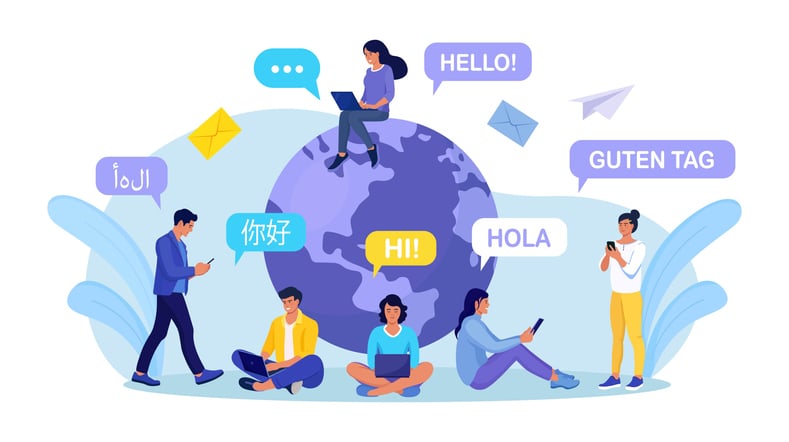
The Evolving Role of Language Services in Government Agencies
The geographic landscape is evolving, and so are your needs for a Language Services Provider (LSP).
We work with a range of government agencies who, on a daily basis, see how globalization is making their part of the world increasingly multicultural. The demand we see from our government clients is a need to support them in ways that go beyond simple translation.
Of course, that need is still there, but the role language services have to play in this field has a wider brief. It needs to be more supportive, consultative, and take a proactive partnership role.
Our government agency clients are working with us and our technology, such as Artificial Intelligence (AI), to help them translate large volumes of documents. This frees up human linguists to give a personal approach where necessary. Technology, with human oversight, also helps our clients with real-time interpretation and digital localization.
Localization allows the agencies to get under the skin of the cultures within their locale. It provides more accurate communication than merely the conversion of words from one language to another. It shows that, as a government, you care for the people, their customs, beliefs, and way of life. You’re understanding and inclusive.
The Purpose of This Guide
We want to help you find the right LSP. The translation, interpretation, and localization partner that is best suited to your agency or department. One that is the right size, has the right flexibility, and understands your requirements and the people you serve.
This guide will take you through the process of finding that LSP. We’ll talk about the landscape as we see it through the eyes of our government clients. Does this match your view? Your requirements? That’s not for us to decide. We can’t tell you what LSP would suit your needs the best.
What we will do is take you through all the considerations so that you can make the best, most informed decision.

Understanding the Language Needs of Government Agencies
Common Challenges Faced by Government Agencies
As a government agency, there are several language-based issues you need to overcome when communicating with your constituents. The ones we’ve come across are:
- Accuracy and quality – You need your translations to be completely accurate and faithful to the original content.
- Compliance and security – You’re in a highly regulated and publicly visible field; your translations need to adhere to governmental regulations and security standards.
- Interdepartmental consistency – The effectiveness of your communication comes from all areas of the government being aligned so they can deliver a consistent message.
- Budget efficiency – You have a fiscal responsibility to your constituents. They’re looking to you to spend funds, derived from their taxes, to secure goods and services as economically as possible.
- Large-scale translations – You will sometimes require large quantities of material to be translated efficiently to roll out projects and messaging on schedule.
- Tight deadlines – Turnaround times in government can often be very short. Urgent translations need to be addressed and delivered.
- Rare languages – Being able to communicate with everyone in an equal manner will likely bring you up against some rare languages that will need individual attention.

The Need for Precision: Accuracy and Cultural Sensitivity
If a translation isn’t accurate, it can do more harm than good. If information fails to reach all your constituents in a consistent way that’s a true representation of the source material, then you run the risk of discriminating against people who don’t speak English.
Given the sensitivity of the type of information that government agencies deal with, a lack of accurate translation could lead to legal action.
Diverse Language Requirements and Localization Services
Ensuring the whole of a population has equal rights means most government agencies need a wide reach when it comes to the languages they cater to. You’ll understand the demographics of the communities you serve, and your LSP will need to be able to facilitate all of those languages, no matter how diverse they are.
We cater to less-spoken languages by having a roster of linguists that cover 98% of the languages spoken around the world. We know that getting people’s confidence goes beyond just speaking their language. You must understand their culture and what is important to them.
Localization goes beyond translation and gets you under the skin of the people. It shows you know about them, and care about them. The values they hold, where they’ve come from, and what affects their lives.
By adapting content specifically to different cultures, you’ll gain the trust of the community.

Translation Technologies and Methods
An Overview of Artificial Intelligence (AI) Machine Translation
The uses for AI are growing every day in almost every industry. Language services are no exception. AI Machine Translation allows you to translate large volumes of material quickly and with little or no human interference. This means, as a government agency, you can make the most of the public funds that come to you by operating this function 24/7, 365 days a year.
Of course, there are limitations that come without a level of human intervention, such as the context of a word used in a translation not being quite right. This is why Machine Translation is best used for text that will have a short shelf life or where translation into a language is a requirement that will most likely have a small audience.
Here are some examples of documents where we’ve used AI Machine Translation to help government departments:
- Social media content
- Services information
- Operational manuals and handbooks
- Internal communications
- Administrative documentation
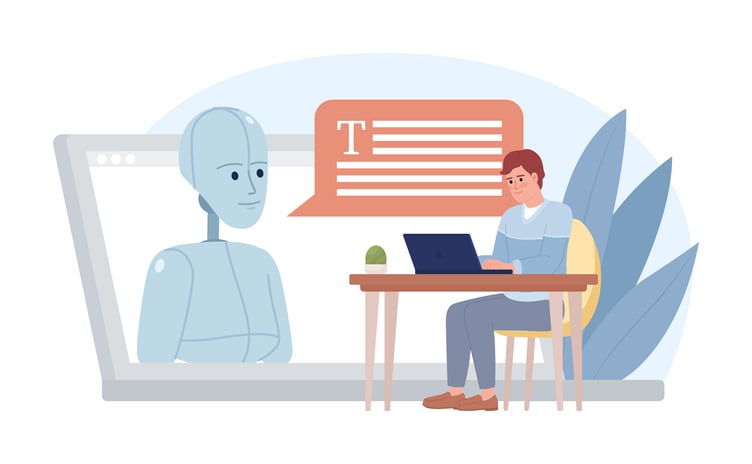
The Role of Hybrid Translation Solutions
Often, Machine Translation needs a human touch to ensure the context of the translation is accurate. This is called post-editing, and we’d suggest different levels of it depending on the complexity and audience of your material.
While timelines for this work are a bit longer, they’re still much faster than straight human translation. There is the added cost of a human translator, so we work with agencies to ensure the process is as economical as possible.
The kind of material that benefits from this approach are:
- Websites
- Digital platforms and service user portals
- Laws and policies
- Official forms and reports
- Supplier and employee contracts
- Partnership agreements
- Press releases
- Brochures
The Value of Human Translation in Government Contexts
When your message is public-facing, culturally sensitive, or highly specialized, there’s no substitute for human translation.
We’d always suggest using linguists who are not only familiar with the native and target languages and cultures but also have experience in government documentation and messaging.
Human translation is best for:
- Advertising – TV, radio, print, public and online.
- Signage and branding.
- Requests for proposals (RFPs) and invitations to tender.
- Immigration documentation and identification.

Integrations and Technological Connectivity
The Importance of Tech Integrations in Language Services
As a government agency, you’ll need processes to be simple and accessible. We use a variety of technology to ensure the translation process is as seamless as possible.
The tech sits in the background, underpinning your needs so employees, partners, and members of the public get a great user experience in any language.
The Types of Connectors and Integrations Available
There’s a wide range of different types of connectors and integrations to consider when looking at translation. We always look at each case individually. Government agencies tend to require security and flexibility. Our experience in the sector shows you’re probably looking at one or more options in these three areas:
- Application Programming Interface (API) integrations – APIs connect two or more applications so that they can exchange data and work in sync. These increase productivity by having your apps talk to each other for optimum performance.
- Content Management Systems (CMS) – These allow you to create content and manage it on a digital platform, such as a website, without having web creation or coding skills. Websites can easily be versioned into other languages and kept up to date between your team and ours.
- Cloud-based platforms – The advantage of working in the cloud is everyone can have access to data regardless of their location, as long as they have an internet connection. This allows for flexible working and easier communication with constituents.
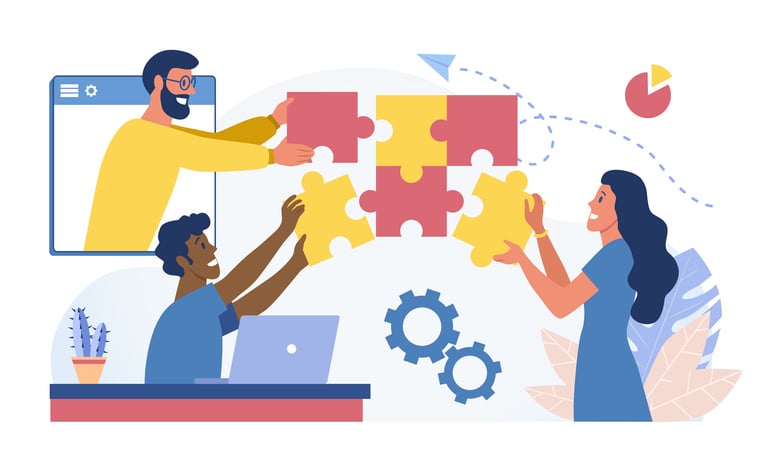
Ensure Seamless Workflow with Advanced Technologies
Embracing advanced technologies puts you at the forefront of serving the people of your community. These technologies allow us to help you to efficiently interact with the public in any language necessary.
Here are a few examples of tech and how they can benefit your department:
- AI – It works for you 24/7, 365 days a year, and constantly learns from new data. It can help translate large volumes of text, allowing for budget and resources to be allocated elsewhere for translations that need human touch.
- Machine learning – This is a subset of AI that uses large amounts of data to predict how text should be translated so that it maintains the context of the source material.
- Automated quality checks – These ensure that all your translations are quality-checked as they’re being translated. Errors are highlighted, and the process doesn’t continue until they’re fixed, thereby stopping inaccurate translations before they go public.

Key Considerations for Government Agencies
Strict Security and Compliance Requirements
Governments are bound by the strictest security requirements in the country. Different agencies and departments have access to different data. Depending on what your area is involved in, you may have personal financial, medical, or criminal records, or you may be involved in the security of the nation.
Translating sensitive or private information means you must adhere to stringent security protocols and compliance standards. These include:
- Data protection – Sensitive information needs to be protected from damage, corruption, or loss throughout the translation process.
- Confidentiality – Those linguists and project team members who have access to sensitive information should have individual Non-Disclosure Agreements (NDAs) or be included under an umbrella government NDA.
- Regulatory compliance – Clearance from any regulators, or quality control groups, to have the information translated and agreements in place for the process to satisfy all parties.
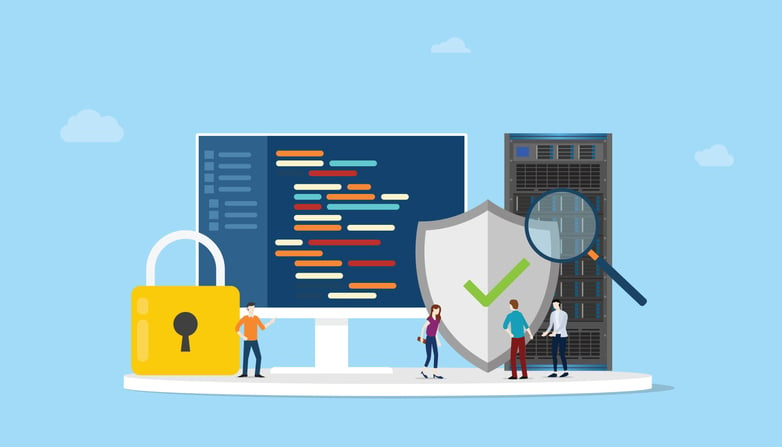
Ensuring Accuracy and High-Quality Translations
Inaccurate translations can do more damage than no translation at all. Rather than not conveying information into a new language and leaving the audience still seeking the information, they can give that audience the wrong information which they will then act on. If you give the wrong information to a segment of your public, you can open your agency to legal complications and a lack of public trust.
The way to ensure high-quality translations is to have skilled translators and a robust Quality Assurance (QA) process.
QA involves a series of quality checks that begin with the source material itself (is it confirmed as accurate?) and end with a translator who is independent of the project, and experienced in the public sector field, checking material for contextual accuracy.
Balancing Cost and Budget Constraints
We know governmental budgets can be tight. You have to balance public funds in a multitude of areas and constantly justify spending. The good news is that if you use the right tools for the job, you can balance accurate translations and save money.
The key to this is getting the right mix of technology and human intervention. Tech tends to be more affordable, but the translation probably needs human eyes on it at some point.
We work with government clients to look at how the information will be used and then suggest either human translation or a version of AI-driven machine translation with a level of human post-editing.
The correct balance for your work will be somewhere on this human-to-machine translation spectrum. Lean on your LSP to get it right for you.
Cultural Sensitivity and Localization
Localization goes far beyond simply changing words from one language into another. It’s translation with cultural relevance. As a government, you need to not only understand the languages your constituents speak, but also where they’ve come from and how their heritage still informs their way of living.
By localizing content, you’re making it more engaging to the public. You’re letting them know that you care about their way of life. You’re also increasing the accuracy of the translations by making them nuanced and contextual to specific communities, groups, and people.

Selecting the Right Language Service Provider
What to Look for in an LSP: Expertise, Experience and Credentials
Government agencies tend to have strong due diligence protocols as part of their procurement process. The decisions that you make as an agency can be scrutinized by opposition parties, competing businesses, and members of the public. So, when in the market to partner with an LSP, what are the areas that need looking at when vetting potential candidates?
The background checks should give you insight into how much direct experience the LSP has for your needs. The key here is to ensure they fit with your specific needs now, as well as any future requirements you can see on the horizon.
If possible, you won’t want to partner with several LSPs, but you’ll find one long-term partner.
Evaluating Providers: Key Questions to Ask

There will probably be questions that drill down into your specific needs, and we’d always suggest going as deep as possible with an LSP before signing a contract with them. To give you a bit of a framework, use these questions as a good starting point:
- How long have they been operating?
- How much experience do they have in the government and public sector field?
- What languages does their roster of linguists include?
- Do they have linguists skilled in the languages you require?
- What’s their process for vetting and onboarding linguists?
- Do they operate in your timezone(s)? If not, how will they accommodate your business day?
- Do they have the capacity to handle DTP, video, and audio requirements?
- What are their professional accreditations
- What is their project management process
- What is their culture like? Does it match yours?
- What would you do if you had a problem that needed addressing immediately?
- What would the likely budget and turnaround time be for a typical project for you?
- Can you talk to any of their other government or public services clients?
The Importance of Certifications and Compliance
Your partners and suppliers are an extension of the services your agency or department brings to your constituents. Industry accreditation around QA, compliance, and project management is important so that your entire extended team is ready to face the scrutiny that comes with public funding.
Your LSP should be certified with, or recognized by, the following standards and organizations:
- ISO 17100 – Specifically for the language services industry, it regulates the whole process of translation to ensure a high-quality output every time.
- ISO 9001 – This is a general specification that any company from any industry can obtain, that regulates a company’s quality and project management systems.
- SOC 2 Type 2 – This report looks at a company’s security protocols when processing data and what steps are in place to ensure privacy and confidentiality.
- HIPAA – The Health Insurance Portability and Accountability Act requires companies to have strong security systems in place when handling protected health information.
- NIST – The National Institute of Standards and Technology has guidelines to follow so companies are compliant when it comes to cyber security.

The Process of Partnering with an LSP
Initial Assessment and Planning
To begin with, your LSP will sit with you and get an understanding of your language requirements, the challenges you face, and get enough information to build a picture of your agency’s working situation.
The point of partnering with an LSP is not just for them to act as interpreters and translators, but to allow them to be forward-thinking and proactively coming up with ideas on how you can better serve your community and save money by planning ahead. At Lingualinx, we work with our clients to position ourselves as that government’s boutique language services arm.
Each individual project should begin with a clear understanding of what’s necessary for this output, with a secondary wider view to see how it impacts the overall language goals of the agency.
At this stage, timescales are set, and the right linguistic team is formed from your LSP’s deep roster of translators and interpreters. Your account or project manager, your primary source of communication, will run the project from here forward.
The Translation and Localization Processes
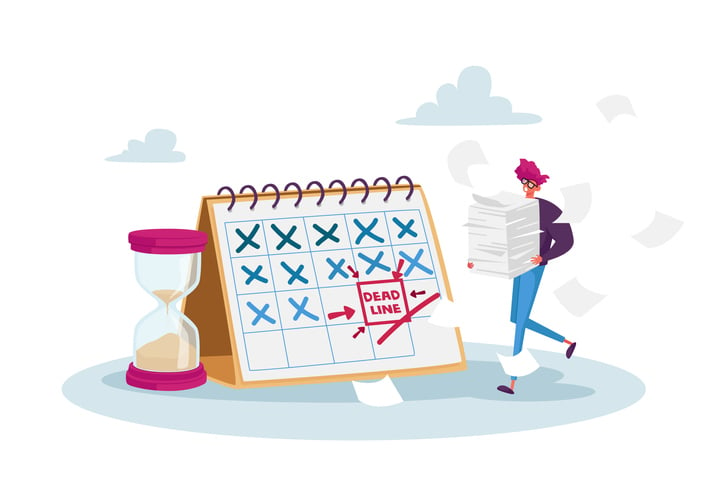
Once your LSP understands your need, the next step is for them to gather the content for translation or localization. This could be a single type of media, most commonly text, or it could be a variety of files such as video, audio, images, etc. When they know what needs to be translated, they can plan the best way to do this.
The source content should be of a high quality so that it’s clear to the linguist. If possible, editable files (e.g., Word docs as opposed to scans or PDFs) are the best to work with for a translator. As the most commonly translated languages are longer than English, desktop publishing (DTP) might have to be used to adjust the layout of the project, whether it’s online or in print.
The content is then in the hands of the translation team, who will take it through to a version that’s ready for checking internally (with an independent translator) and externally (with you, the client). This might require entirely human translation or a level of machine translation with human post-editing, depending on the complexity of the material, the budget, and the timescales.
When localizing material, it’s always important to be clear about who the end audience will be. This way, the team that's put together and the language they translate the content into can be very specific to the region, community, and culture of the audience.
They’ll consider nuances such as dialects, how formally those people speak, slang or phrases common with the culture, and other factors which go far beyond changing the language of material. These little details should make the audience feel as though the material was originally written in their language and hasn’t been translated at all.
Quality Assurance (QA), Editing, and Proofreading
Once a version of the translation is complete, the QA process begins. This is another reason why having an LSP on board, as opposed to just a freelance translator, becomes a huge advantage.
Freelance translators tend to edit and proof-read their own work. Their original translation isn’t reviewed and challenged by an independent editor or proofreader, who can bring a fresh perspective to the translation.
Editors will bear in mind the community of the audience and review the translation in terms of destination language and cultural accuracy. During this internal feedback and review stage, various iterations of the translation will go through a feedback loop until it’s determined that the work is ready to go to you for feedback and, ultimately, sign-off.
Final Delivery and Ongoing Support
When the translated material comes to you, you can at it look and do your own sense check on it. Even though you don’t speak the translated language, it’s still good for you to thoroughly check it.
As a government agency, this translation comes from you. The people you serve won’t be thinking about whether an LSP did a good job with a translation or not; they’ll be putting the accuracy of the communication firmly on your shoulders.
A good translation will strengthen your position in the community. It’ll gain you trust and show that you care. If you have someone on your side who speaks the target language and can review the translation, then this is a good time to bring them into the equation.
Once you’re happy and the material is signed off, that specific project is complete. There should be a review process so that you can get feedback on how you thought the project was handled and if there’s anything that needs to be adjusted for the future.
Your relationship with the LSP should be one that is ongoing, so they are a constant source of information for you on any language or localization topics. This goes back to being positioned and thought of not as a supplier but as a linguistic arm of your department.

Why Choose LinguaLinx as Your LSP
Our Expertise in Government Translation
We know how difficult it is for governments to keep everyone happy and feeling like they’re being heard, and their needs are prioritized. We have several government agency clients that come to us because we understand the political landscape and how to operate within it.
We work with government agencies to help them better understand and communicate with their constituents, removing language barriers so the relationship between the people and their elected officials is as frictionless as possible.
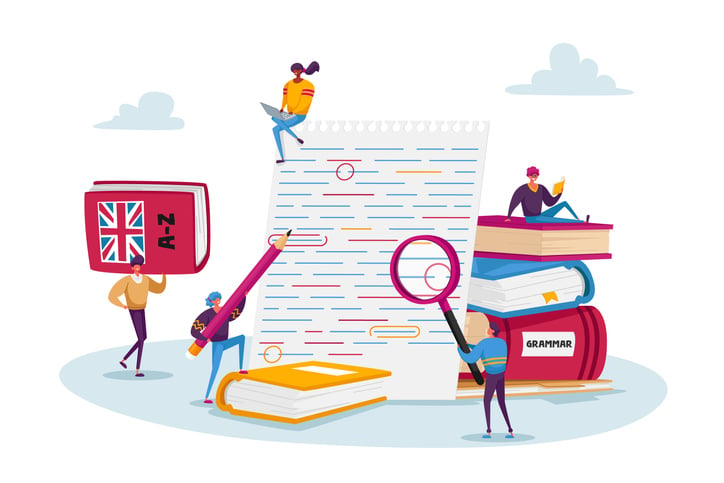
Our Proven Track Record with Major Government Agencies
We’re the preferred LSP for many federal, state, and local agencies. We’re used to working with agencies and departments of different sizes, with different political parties, with different budgets and needs.
We know there’s no one-size-fits-all solution to the communication challenges that come with being in public office, so we always remain open-minded to new ideas and approaches to engaging different cultures and communities.
Our Commitment to Security, Compliance and Quality
We take our ISO 17100 and ISO 9001 compliance very seriously.
To retain our ISO certification, we agree to regular audits of our finished material and our project management process by an independent auditor.
And with our SOC 2 Type 2 certification, you know all your data will remain private and confidential. We have the secure technology to defend against cyber-attacks and protect your constituents.

Take Your Next Step
A Recap of the Essential Role of LSPs in Government
Your LSP is your voice to your non-English speaking constituents. They voice your ideas, policies, and requirements to the people you serve. They’re there to make sure that your communication with everyone is clear and consistent.
The right LSP will also guide you through potential difficulties with their on-the-ground knowledge of different cultures and customs. They should understand the landscape of the people you're talking to and how things work in public office.
They should be cognizant of the different challenges that governments face as opposed to businesses and corporations that can maintain a steady market position for a long period of time.
We’re Here to Help, Call Us Now
We hope you find this guide a useful resource for finding the right partner to help with your language needs.
But we’ll be blunt; we believe we are that partner. If you work with us, we can make your life easier and give you more time to focus on what matters within your community.
Consultations are free, and even if you don’t choose us as your LSP, you can pick our brains.
Hopefully, with this guide, we will prove that we understand a thing or two about what governments need from an LSP.
Subscribe via Email
Subscribe to our blog to get insights sent directly to your inbox.



